I love a shoot where the light is sweet and nice, and you can just rattle and hum throughout the job with the sun at your back and the wind in your hair, lovely models draping the set, and the hair and makeup people folks are twiddling about. I sit in a director’s chair, latte in hand, and am only called to the set when they need to reverently place a camera in my hands, and the multiple assistants have the fill board positioned exactly right. (That’s the only piece of gear. All the lights and other heavy stuff are still in the trunk of the car, ’cause, as I mentioned, the existing light is so beautiful.)
Ah, yes, I remember a shoot like that. The French Riviera, I believe it was.
Actually, I don’t remember anything like that at all. The above is a delusional reverie that occasionally kicks in. I think I’m inclined to visit this dream world partially due to the fact that I’ve been hitting my head against the basement walls of bad locations for far too long, and maybe some damage has been done. My photographic lot in life has been to take something that doesn’t look very good to begin with, and make it look nicer. Even wonderful, or pleasing, on a good day. Which puts me in league with most of the photogs on the planet. We share a commonality of simultaneous joy, purpose and misery, and the secret phrase to gain entry to this not-so-secret society is generally worded along the lines of, “You want me to take a picture of what?”
The “what” at the heart of this story is a very expensive microscope. It looks like the picture above.
No, it doesn’t. It looks like the picture below.
Remember I mention that bit about concussing myself. I wasn’t lying.
This was a daunting task in the middle of a wonderful assignment, which was to create a coffee table book for a large hospital system in the New York area. But, as so often happens in the course of a job like this, you are shown a something or other that the client deems crucial, or noteworthy, and you have to pull out all the stops to make it look spiffy, if not downright compelling. In this case, I had to take this gray, box-like instrument and make it look like something Captain Kirk would consult as he was about to alter course. This is just part of the deal, really. If it’s important to the client, it must become important to you. You have to apply every skill you have to make a picture out of something that really isn’t a picture. It goes with the job.
First, control the room. Make it black. Easy. We were in the basement.
Next, try for color and separation in the background. An SB-910 with a theatrical green gel seemed logical for the area around the scope. A quick floor light in the background was a bit of a start. Not very promising. This is where the little floor stands that come with the SB style Speedlights are really handy. Just a little base plate, and the light sits there, at attention. The green light is behind the scope, and the wall light is on the floor behind the black draping.
Get the microscope monitor to display something of interest. Preferably with color continuity. Find other cool stuff and accent light it with another SB unit, this one fitted with a snooted grid. I’m always happy in a lab when there is a vial of red liquid. The Speedlight with the snoot is up to camera right, angled back to the test tube in the foreground.
Move the monitor to a more prominent position, and light the far wall with a purpose. Also, position the person who will be in the photo and see what kind of light she might need. Also, define the actual scope, which means lighting the front of it with a cool color.
Move the research scientist into position. Warm, small light for her face, and a separator light for her back. The facial light is tucked behind the scope, clamped back there and gridded super tight to regulate spill.
Six small flashes. All with grids, snoots or tape. Most with some sort of “science-like” color. Reality departed here before I even took the camera out of the bag. I was working for a client, and the client wanted it to look cool. I wasn’t working for the NY Times. I was presenting a glossy view relative to the excellence of the hospital as it perceives itself.
The big governing factor here was the wonderfully smart, agreeable individual we were working with. As pleasant as she was, she told us flat out she had to leave precisely at five, as she was the driver on that day of her co-worker car pool. All of them were dependent on her to get them home on time for kids, dinner and the like. So, I had three hours to do the shot. Done.
Such are the things the life of a photog spins on. Down there, in the basement, with lots of lights.
More tk….
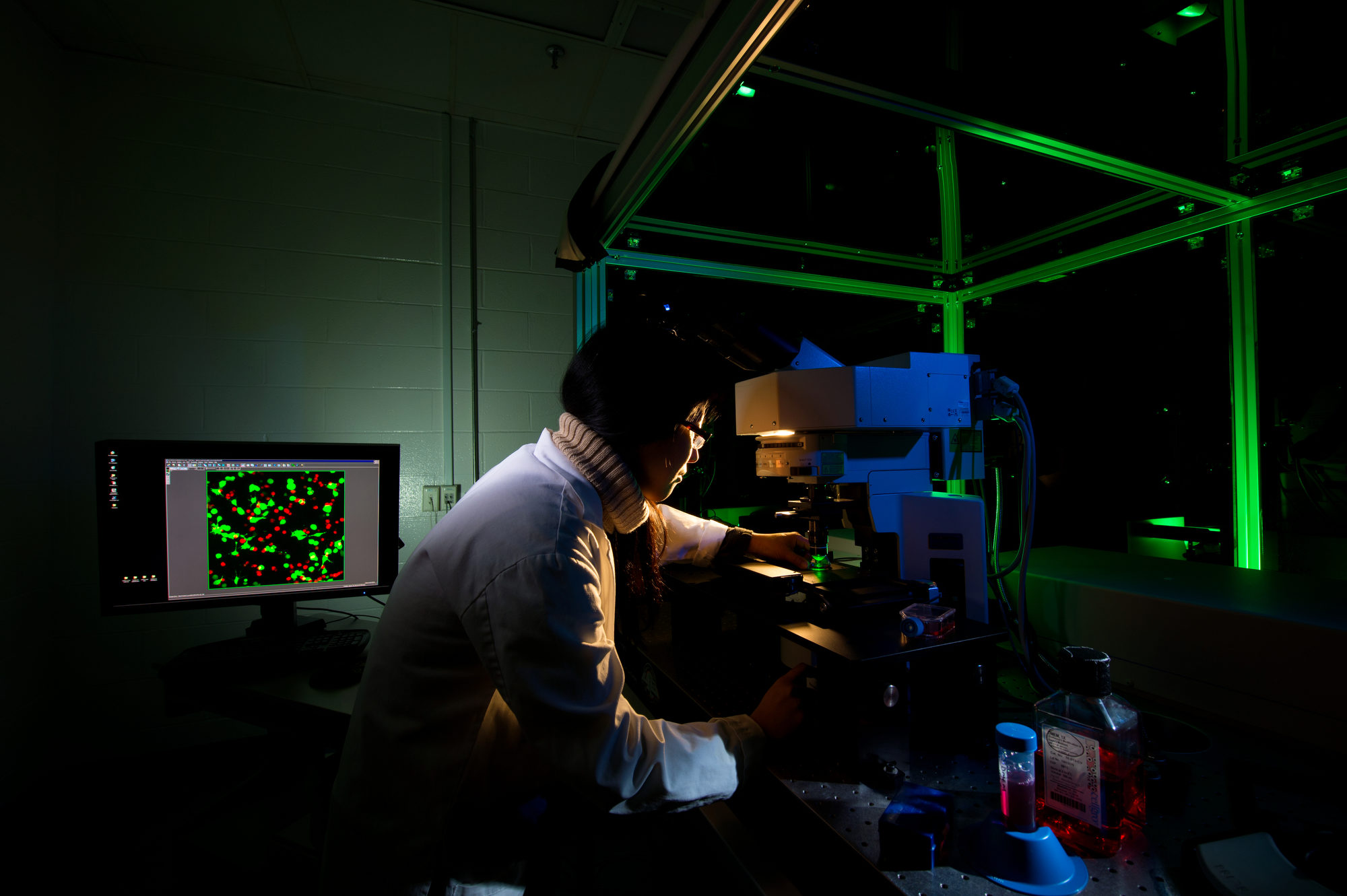
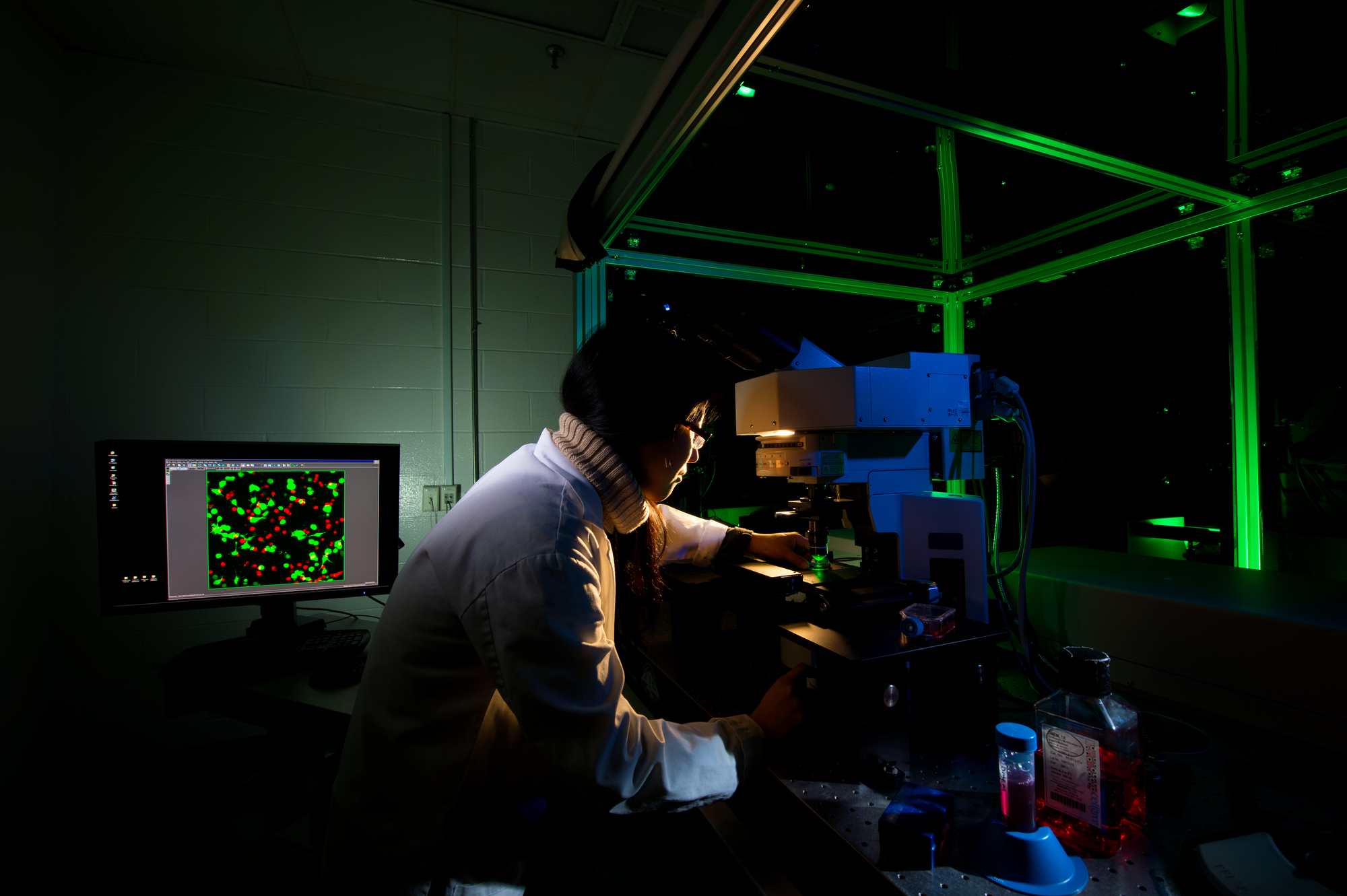
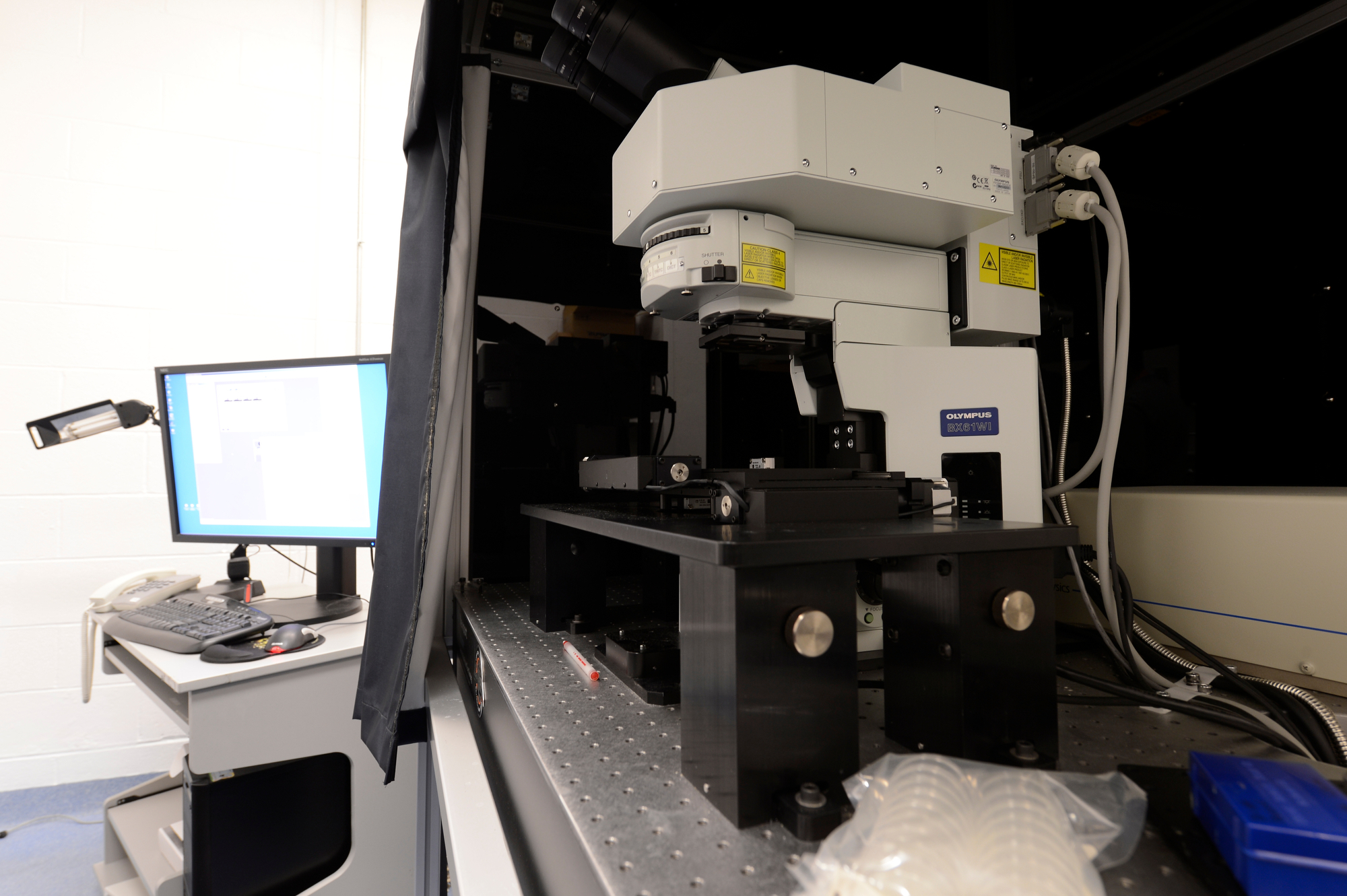
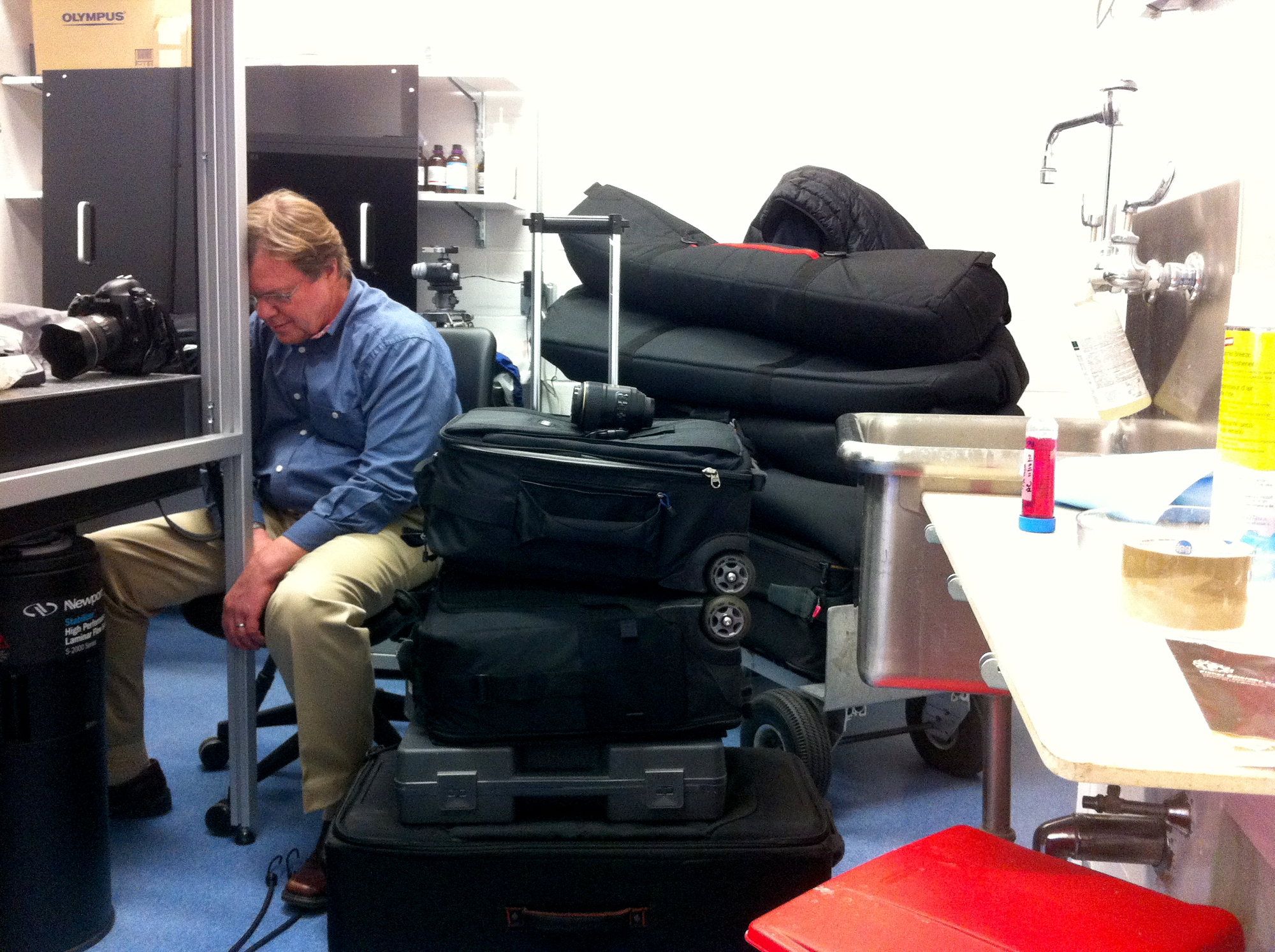
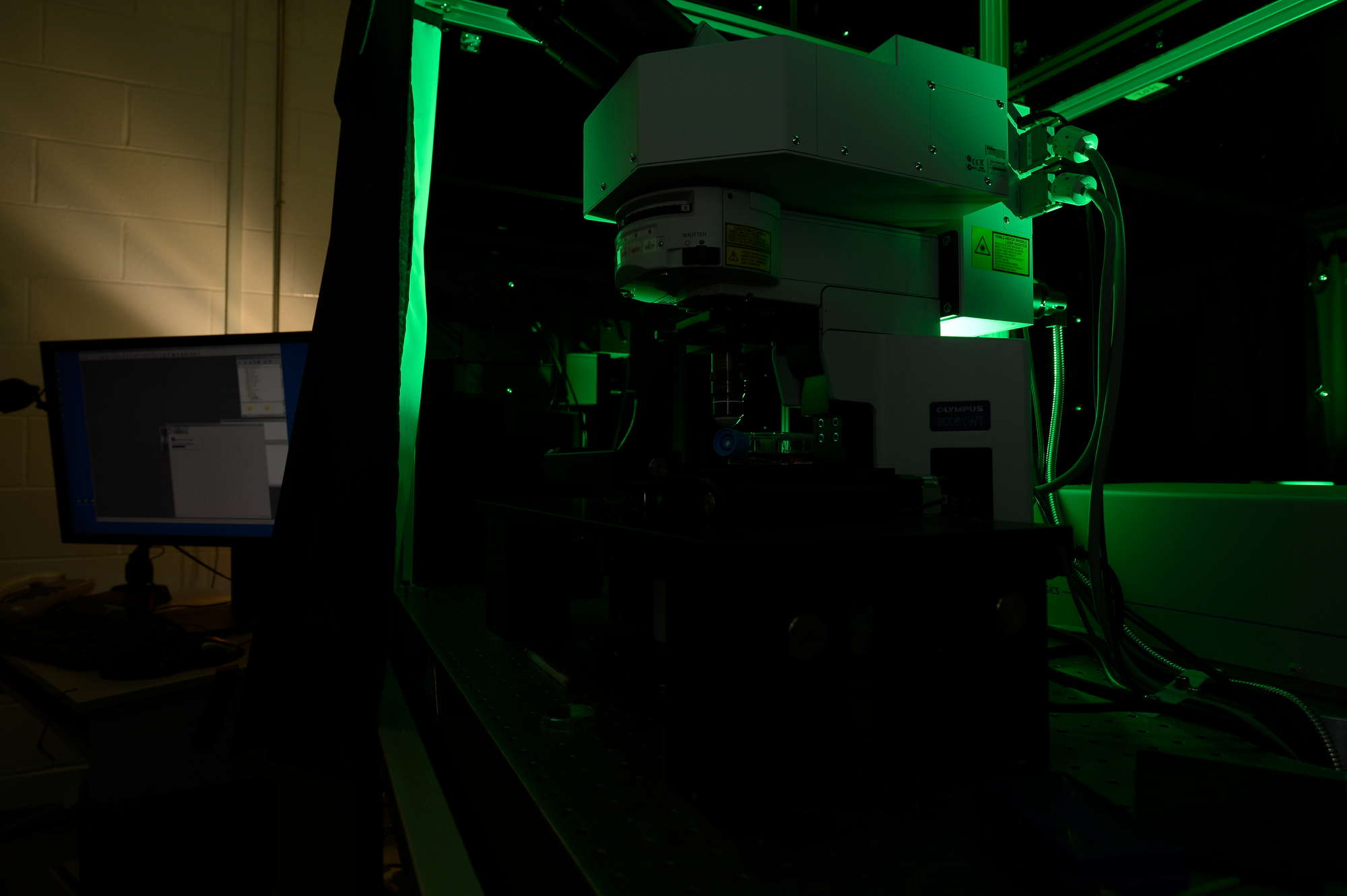
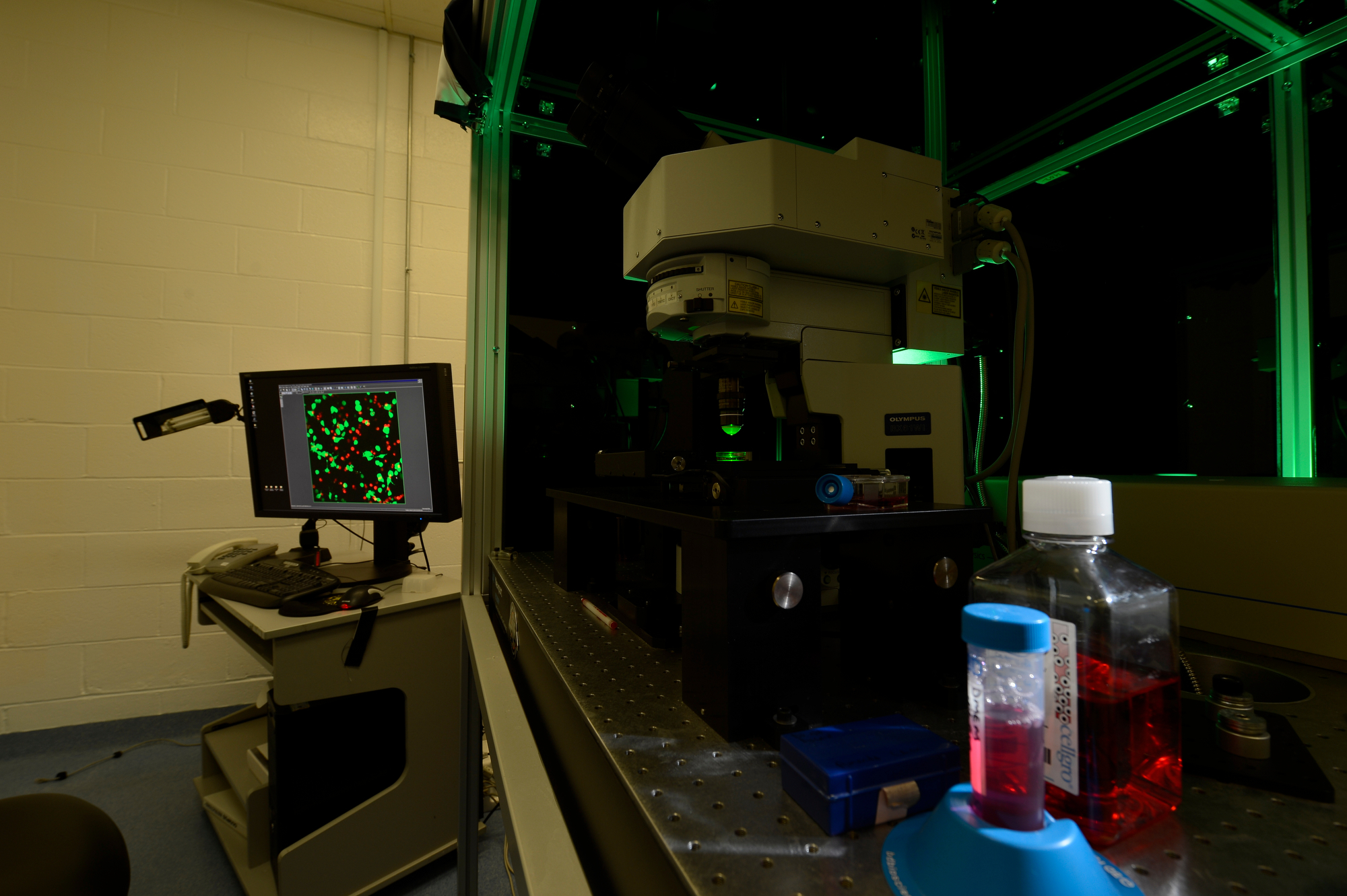
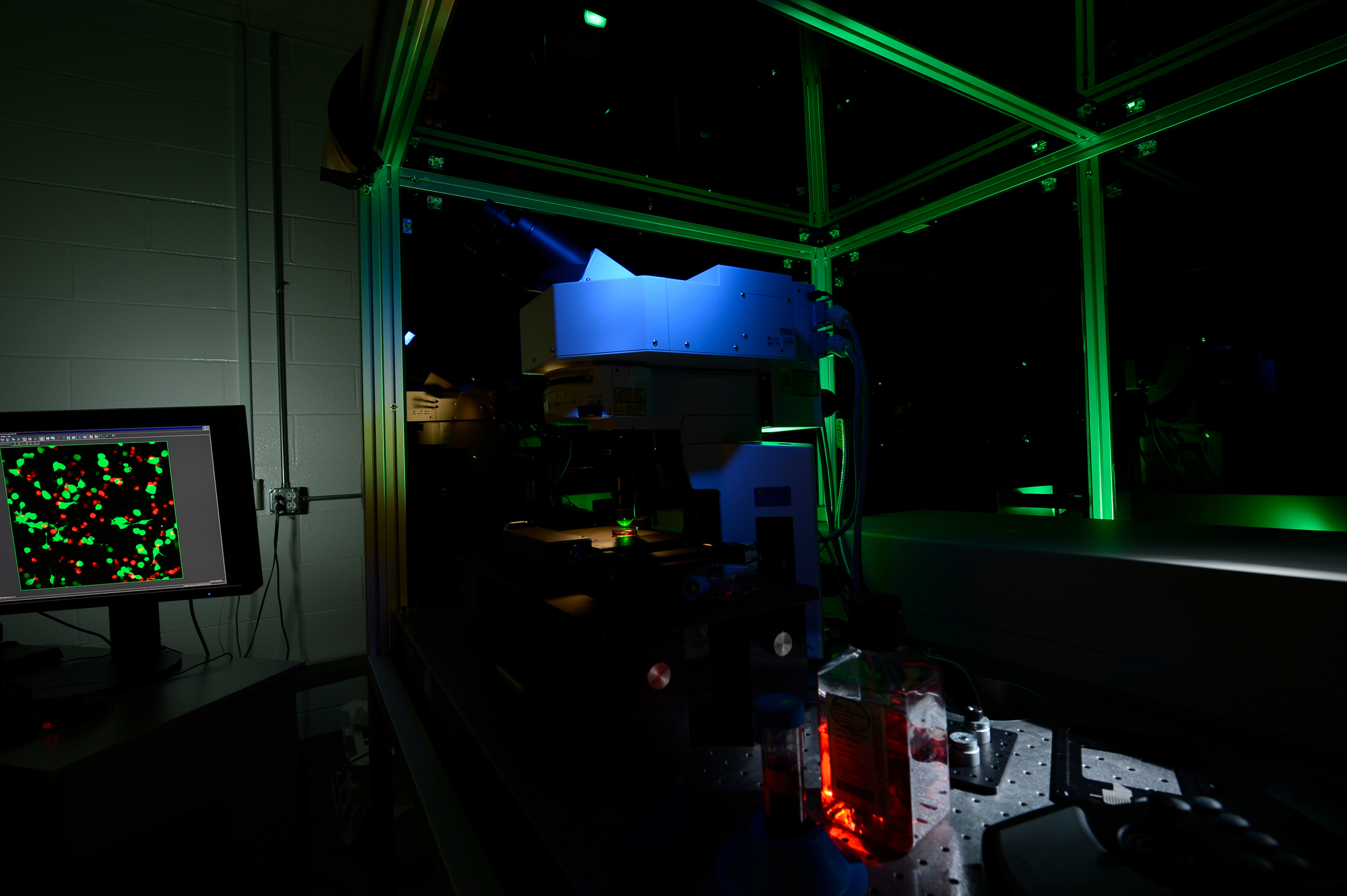
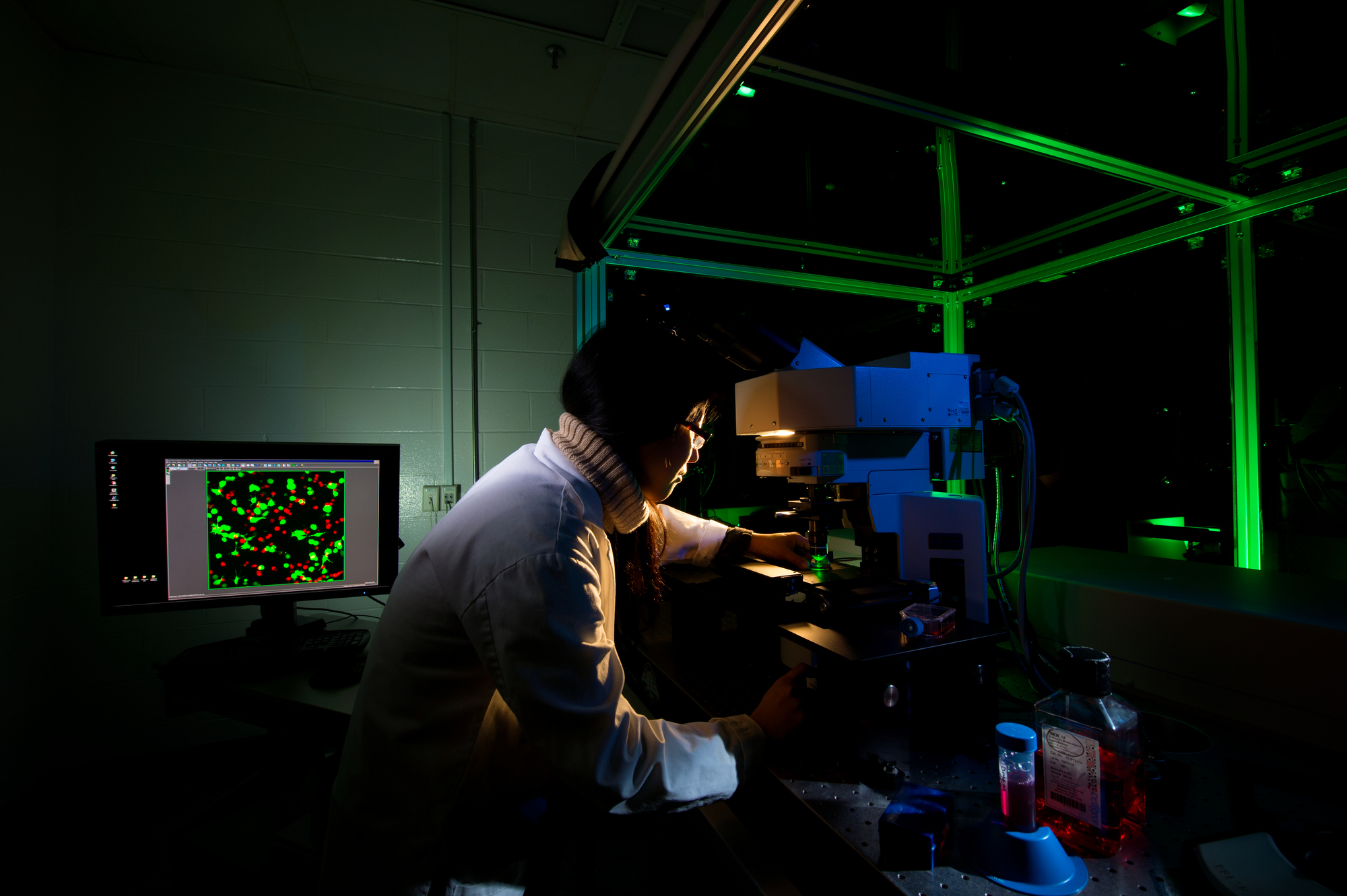
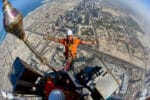
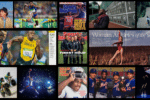
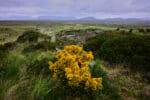
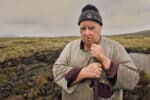
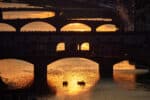
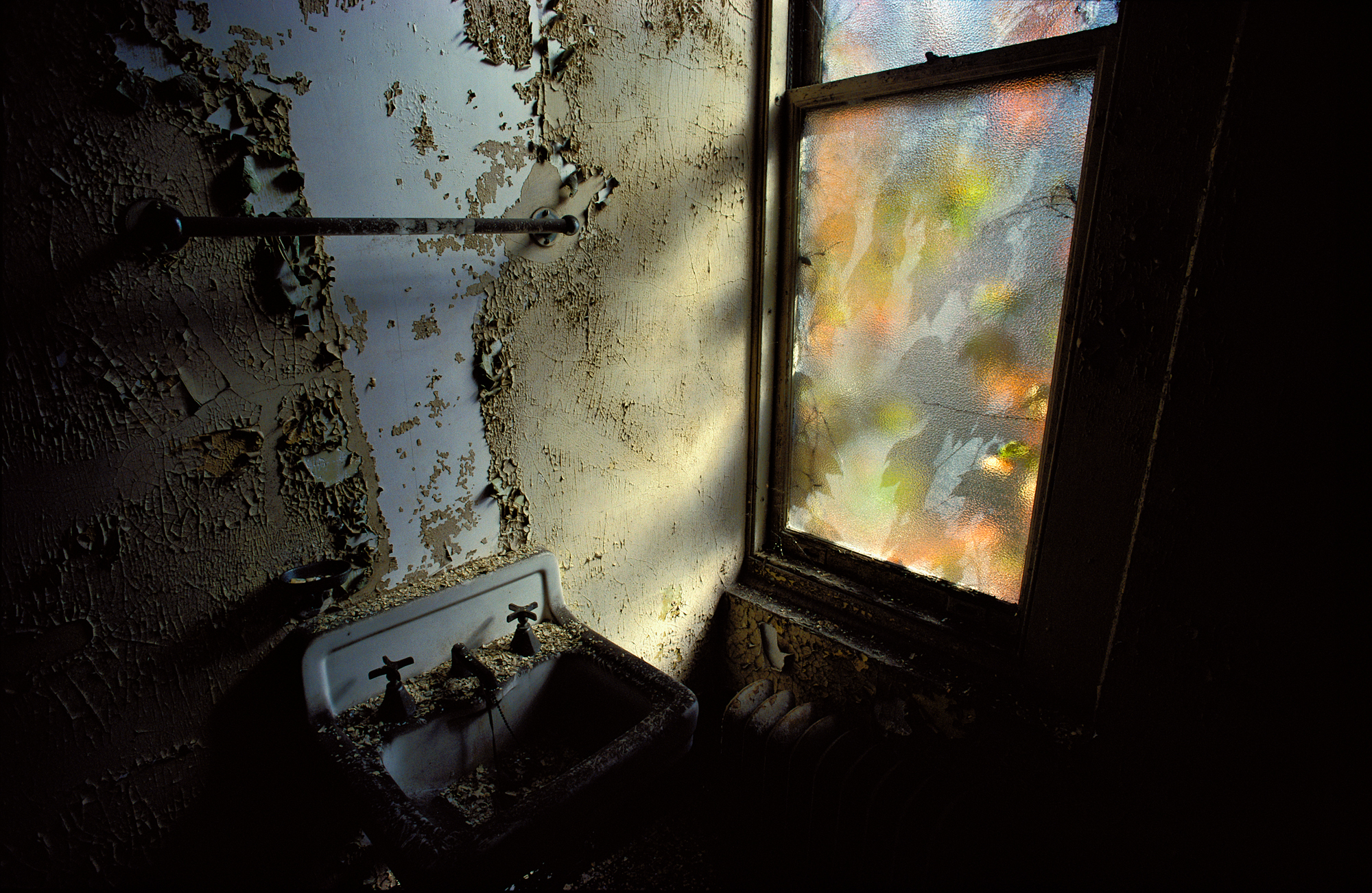
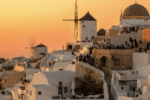
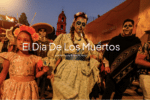
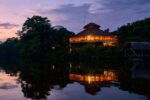
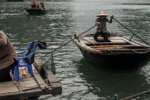
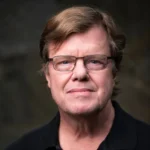


To make something from nothing is an art in itself. Thanks for explaining the ‘building blocks’ of this photo.
Dammit Joe, I wouldn’t expect anything less than this excellent result. Keep it up !
Love the tongue-in-cheek frustration, but reading between the lines, you’re reminding pro photographers to be GLAD for terrible lighting and locations because if they didn’t exist, anyone with an iPhone could snap 50 pictures until lucking into a nice composition. Managing a work of art in a difficult, must-do situation is what makes a pro a pro, and honestly, I know of no one who does it better than you.
So, you had three hours to pull off the shot; how long did it take you from start to finish?
I love how you tackle the job and break it down and control the light each step of the way Joe.
Well, I believe we had a break in between our morning location, and this one. Grabbed some lunch. Got the gear on carts and into the basement. Talked to the research doc in charge of the area. Found out what was possible, and my time parameters. So, yeah, we moved fast. From pulling out the first light to the finished shot was about 3 hours.
Thanks for constructing the story and deconstructing the shot for us Joe.
Ah Mr. McNally you are an apt sorcerer of the magic of light! Make something from nothing? That’s why they pay you the “big bucks”! Nice photo Joe and great explanation.
Your writing ability is only surpassed by your photography skills. Have you considered an easier job as a journalist?
Oh my oh my! A great lighting and a great story. Thank you.
Mr. Joe, we have a saying at work that goes ” I’ve been doing so much, with so little, for so long, I am completely qualified to do anything, with next to nothing, FOREVER!!!” I am sure with 4 speedlites, a couple justin clamps, 2 cups of coffee and thirty-five minutes, you could light a battleship and make it look easy.
Have a great day
PJ
Fantastic work Joe! You had me completely fascinated and humored at the same time! Thanks for walking us through the entire process….keep it up!
ohhh Joe!!!!! How can i get 1/10th of your photographic vision?. How long does it takes?. I won´t give up cause you don´t. Thanks
Joe,
I just had to do the same thing except with a laser printer on a white folding table in a plain white room. I used blues and reds (since the printer had a small red light when it printed anyway). The first thing I thought was, “How would Joe light this?” I honestly would have been lost if not for you and your teaching. Though I have never met you in person, I tell people you are my mentor. I tell people, if I know it, I learned it from Joe. Thank you for all you do to teach and educate.
Mindblowing, once more. What you explain here would be even more powerful if you’d hid the final photograph all the way to the conclusion and put the basic scenery with the whitish microscope at the top instead. Because when you start by seeing the solved jigsaw, The part assembly seems less magic, while if you lead us readers to a mysterical destination, we would be even more amazed than we are now, if ever possible.
I’ve been photographying technical dudes over the past years and I can tell you that all the microscopes I shot always looked like the white picture. What always impresses me in your work is that boom! you think of a way to make the scene standing out and boom! you succeeds in achieving this and put in front of our eyes what you had in mind. This creativity and efficiency really impresses me. It is super inspiring. I keep trying to implement them in my own humble work. It’s been to poor avail, so far, but I keep trying, because all the fun resides in repeated tries.
Thanks for sharing all of this. Cheers.
Fantastic work! I am addicted to your lighting repertoire. One question; if I try something like that in a small room with Nikon Speedlights, do I need radio triggering devices like the Pocket Wizard as none of the flashes are going to be on the line sight of the master one? Thanks for sharing.
No need for radios here, Juan. Line of sight in a small space like this works really well. Best, Joe
Very creative and very inspiring – Now I need to buy more lights.
Well done Joe.
A real job with a proper purpose and a real save with speedlights and snoots.
What I like is the attention to the little details as the little bit of green light right where the slide and the scope come together. This is where your eye is drawn and rightfully so. How you kicked that little bit if light in is pure magic. Great inspiring work. Thank you for sharing.
Joe, thank you for what you do, and for sharing it with the rest of us.
Thats amazing job done by you Thanks for share..
What an incredible job and in only three hours! Your writing style is great too! So glad I found your blog, looking forward to more!
Very impressed with the facial light…just the right power and at such a short working distance. Nice use of colors, too. I get called upon to make similar shots of boring (IMHO) research equipment in drab, cramped laboratories. I’ve never done a shot as nice as this one, but it inspires me to try using more lights with controlled spreading and complimentary colors. Thank you for sharing!!